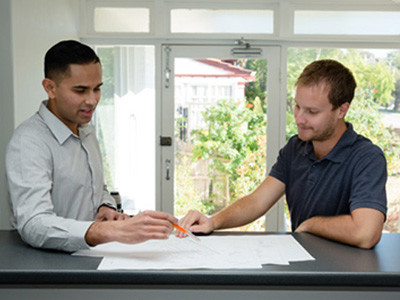Financial Evaluation of Subdivision Feasibility Assessment

The viability and profitability of creating a new subdivision are heavily influenced by the subdivision feasibility assessment. Numerous economic elements that may have an impact on a subdivision project's long-term profitability must be taken into account while assessing its financial viability. These variables include the state of the economy, housing demand, the construction of infrastructure, and the regulatory framework.
The success of a subdivision feasibility assessment project is greatly influenced by market conditions. The demand for new housing can be understood by examining variables like population growth, employment rates, and income levels in the target market. For effective financial analysis and decision-making, it is essential to comprehend market factors, such as housing affordability, consumer preferences, and competitiveness.
Another significant economic aspect in determining the viability of subdivisions is infrastructure development. For a subdivision to be functional and appealing to potential purchasers, it must have adequate infrastructure, including roads, water supply, sewage systems, and utilities. Determining the financial sustainability of the project requires evaluating the area's current infrastructure and estimating the cost and feasibility of any necessary modifications or expansions.
When doing financial analysis for the subdivision feasibility assessment, the regulatory environment is a crucial factor to take into account. To ensure compliance and prevent any delays or fines, it is essential to comprehend local zoning and land-use regulations, permit procedures, environmental impact assessments, and other related restrictions. To make accurate financial estimates, it is essential to evaluate how these rules may affect project costs and timetables.
Financial Evaluation of Subdivision Feasibility Assessment
The study of the viability of subdivisions includes a financial analysis. It entails assessing the project's numerous financial factors to ascertain its profitability and return on investment. Costs associated with purchasing property, development costs, building costs, marketing and sales plans, anticipated revenue levels, and financing possibilities are among the most important financial factors.
Costs associated with land acquisition make up a considerable amount of the project's overall costs. Accurate financial assessment depends on carrying out in-depth investigation and analysis to establish the land's fair market worth, negotiating advantageous acquisition conditions, and taking into account prospective resale value.
Site preparation, surveys, architectural and engineering fees, legal fees, and acquiring relevant licences are only a few of the costs included in development expenses. To prevent underestimating the project's financial needs, these costs and any prospective cost overruns must be taken into account.
A significant factor in the feasibility examination of subdivisions is construction expenses. It is crucial to do a thorough cost estimation for the construction of the necessary infrastructure, housing units, landscaping, and amenities. To create realistic financial estimates, it's vital to take into account variables like material costs, labour costs, contractor fees, and unforeseen eventualities.
The financial performance of a subdivision project is greatly influenced by marketing and sales methods. Sales predictions, target market research, price plans, and effective marketing campaigns should all be included in the financial analysis. Furthermore, it's critical to evaluate prospective hazards like real estate market swings and modify the marketing strategy as necessary.
One important component of financial analysis is projected revenues. For the project to be financially viable, it is crucial to forecast realistic sales volumes, prices, and cash flow. To provide precise revenue estimates, it is essential to assess several variables, including demand, market saturation, competition, and potential customers' preferences.
During the feasibility study, it is crucial to thoroughly consider financing choices and expenses. The profitability of the project can be considerably impacted by examining various financing options, interest rates, payback terms, and associated costs. Making wise selections and finding adequate money for the subdivision feasibility assessment project involves a thorough analysis of the financing needs and prospective returns.
Important Parameters for Subdivision Feasibility Assessment
The financial viability of the project is assessed using several important parameters throughout the subdivision feasibility assessment. Profitability, return on investment, risk, and overall project success are all measured using these indicators. Financial analysis frequently uses metrics like Return on Investment (ROI), Net Present Value (NPV), Internal Rate of Return (IRR), Gross Development Value (GDV), Break-even Point, and Debt Service Coverage Ratio (DSCR).
Return on Investment (ROI)A key indicator of the subdivision project's profitability is the return on investment. It determines the proportion of return generated from the project's overall investment. Greater profitability and financial success are indicated by a higher ROI.Net Present Value (NPV)The project's value in terms of money at present is calculated using Net Present Value. It computes the present value of anticipated cash inflows and outflows while considering the time value of money. If the NPV is positive, the project is anticipated to provide more value than its initial investment.Internal Rate of Return (IRR)IRR is yet another significant statistic utilised in the subdivision feasibility assessment. It represents the anticipated annualised rate of return for the project throughout its entire life. An investment opportunity is more appealing when the IRR is larger.Gross Development Value (GDV)Gross Development Value (GDV) is the subdivision's overall value, taking into account the value of the homes and other assets. This indicator aids in evaluating the project's overall revenue potential and its implications for its ability to be financially viable.Break-Even PointThe break-even point is the volume of business or income at which a project is neither profitable nor losing money. This statistic aids in determining the minimal sales volume necessary to cover all costs and the project's financial viability.Debt Service Coverage Ratio (DSCR)The project's capacity to repay its debt is assessed by the debt service coverage ratio. It compares the debt payment commitments to the project's cash flow that is available to cover its debt. A greater DSCR improves the project's financial viability by indicating a decreased chance of default.

In conclusion, financial analysis is an essential step in determining the subdivision feasibility assessment. It calls for careful consideration of numerous economic considerations, detailed financial analysis, and the use of essential metrics. Developers may maximise the performance of their subdivision projects by doing thorough financial analyses, analysing market conditions, and taking into account key indicators.
Advertise on APSense
This advertising space is available.
Post Your Ad Here
Post Your Ad Here

Comments